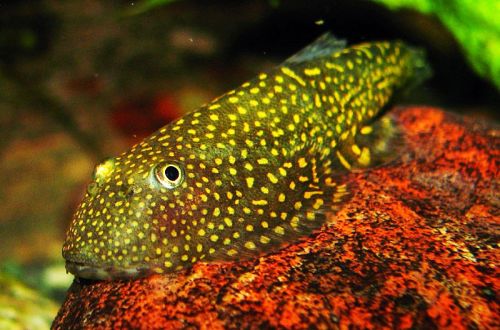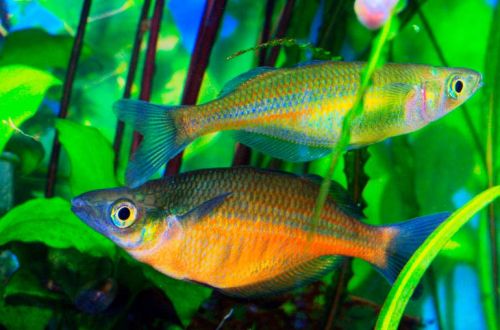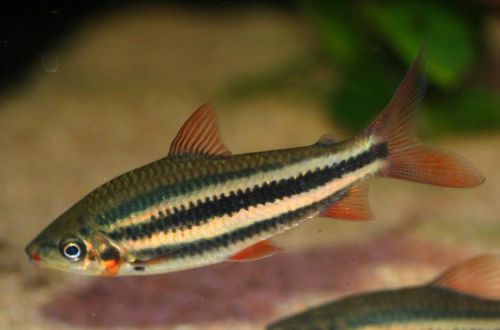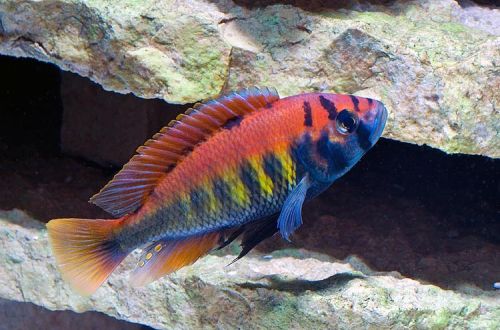
Haplochromis Nyereri
Haplochromis Nayereri (or Niereri), scientific name Haplochromis nyererei, belongs to the family Cichlidae (Cichlids). The fish is named after the first president of Tanzania, Julius Kambarage Nyerere (1961-1985). It is easy to maintain, only the aggressive behavior of males can cause a problem, so it is advisable to keep only one male in the aquarium.

Contents
Habitat
It comes from the largest lake on the African continent, Victoria, on the border of Tanzania, Uganda and partly Kenya. The fish is found in the southern part of the lake between numerous islands. In the natural habitat, there are practically no aquatic plants, and the landscape is a heap of rocks along a rugged coastline, dotted with cracks, grottoes, etc.
Brief information:
- The volume of the aquarium – from 250 liters.
- Temperature – 23-27°C
- Value pH — 7.0–8.5
- Water hardness – 4–15 dGH
- Substrate type – gravel, sand
- Lighting – subdued
- Brackish water – no
- Water movement is weak
- The size of the fish is 7–8 cm.
- Food – any food
- Temperament – conditionally peaceful, males do not get along well with each other
- Keeping in a group with one male and several females
Description
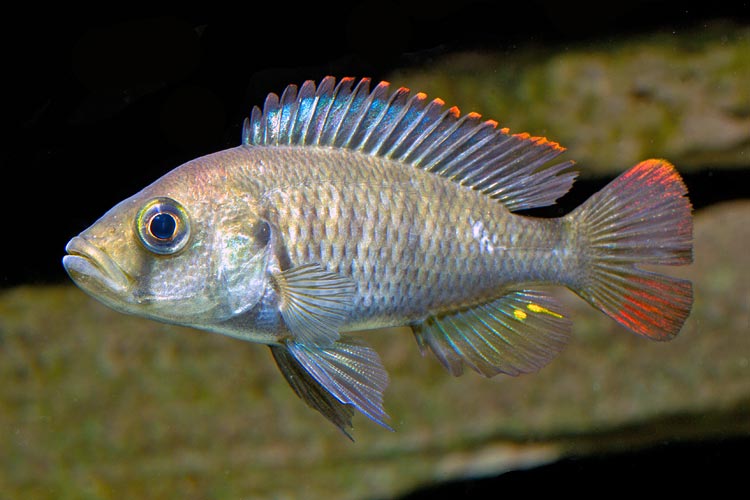
Adults reach a length of 7-8 cm. Males are somewhat larger and more colorful than females – the back is bright orange, the abdomen is saturated blue, and a series of vertical yellow stripes runs along the body. The females are grey, with only the fins and tail having red and blue pigmentation.
There are at least 11 varieties of this species with slight differences in body pattern. To identify them, the name indicates the name of the island where a particular species is found.
Food
Omnivorous species, accepts most popular foods designed for aquarium fish. The daily diet, for example, may consist of dry flakes, granules, in combination with live or frozen daphnia, brine shrimp, bloodworms.
Maintenance and care, arrangement of the aquarium
The optimal size of the aquarium for a group of 3-4 fish starts from 250 liters. The design uses a gravel-sand substrate, fragments of rocks and large stones, from which gorges and caves are formed.
The long-term maintenance of Haplochromis Nyerere depends on the provision of stable water conditions within an acceptable range of temperatures and hydrochemical values. To do this, in addition to equipping the aquarium with the necessary equipment, it is required to regularly carry out maintenance procedures: weekly replace part of the water with fresh water, regularly remove organic waste, check the water for dangerous concentrations of nitrogen cycle products, and more.
Behavior and Compatibility
Males are aggressive towards each other and, if there is not enough space, their skirmishes can end in death. In one aquarium, it is recommended to maintain the size of a group consisting of one male and several females. In relation to other species, more or less neutral. Compatible with other fish from Lake Victoria, as well as Mbuna cichlids.
Breeding / breeding
Breeding is simple. The fish follow a breeding strategy common to many African cichlids, in particular those from Lake Malawi. During spawning, the female lays several dozen eggs, which she takes into her mouth immediately after fertilization, where they remain for the entire incubation period (about 3 weeks). The fry that have appeared are under the care of the female for some time, until they become large enough.
Fish diseases
The main cause of diseases lies in the conditions of detention, if they go beyond the permissible range, then immunity suppression inevitably occurs and the fish becomes susceptible to various infections that are inevitably present in the environment. If the first suspicions arise that the fish is sick, the first step is to check the water parameters and the presence of dangerous concentrations of nitrogen cycle products. Restoration of normal/suitable conditions often promotes healing. However, in some cases, medical treatment is indispensable. Read more about symptoms and treatments in the Aquarium Fish Diseases section.



